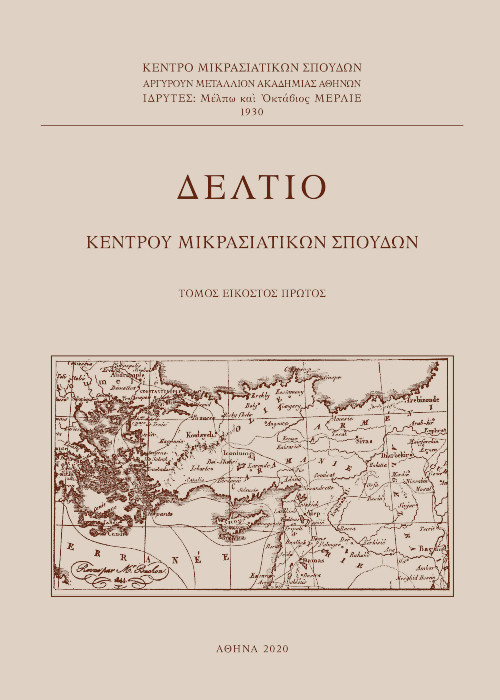Greek church silver and furniture from Constantinople
Abstract
16th century Orthodox liturgical silver displays a hybrid Christian-Islamic
character exemplified in the persistence of the Byzantine iconographie tradition,
in the use of western European shapes and techniques, and in the
adoption of Ottoman decorative styles. Two characteristic examples of this
hybrid style are a bowl stamped with the tugra of Bayezid the II (fig. 1) and
a jug with animal decoration and christological symbolism (fig. 8). Both can
be attributed to the Balkans or at any rate to a Christian tradition which
was formative for Ottoman silverware.
To the same tradition we can ascribe two more silver objects, a chalice (fig.
4) donated by Patriarch Theoleptos the II (1585-1587), and an enamelled bowl
(fig. 6) inscribed with the name of the Metropolitan of Euripos, Laurentios
(manufactured in 1580 or 1587). Their particular interest, however, lies in that
they can be securely attributed to Greek craftmanship in Constantinople and
reflect the cultural milieu in which they were produced —the Oecumenical
Patriarchate.
In the second half of the 16th century, the Oecumenical Patriarchate was in
the process of realising and asserting its secular power towards both the Ottoman
authorities and its Christian flock. In this process Patriarch Jeremia II
played the most important role. His restoration of the patriarchal church and
premises was an ambitious project worthy of an Oriental potentate. Today,
only his patriarchal throne survives (fig. 8). Dated 1577, it has a Byzantine
shape, Ottoman inlaid decorative designs and long inscriptions in verse praising
with Byzantine eloquence the secular powers of the Patriarch.
Article Details
- How to Cite
-
Μπαλλιάν Ά. (1988). Greek church silver and furniture from Constantinople. Bulletin of the Centre for Asia Minor Studies, 7, 51–73. https://doi.org/10.12681/deltiokms.187
- Issue
- Vol. 7 (1988)
- Section
- Articles

This work is licensed under a Creative Commons Attribution-NonCommercial-ShareAlike 4.0 International License.
Authors who publish with this journal agree to the following terms:
- Authors retain copyright and grant the journal right of first publication with the work simultaneously licensed under a Creative Commons Attribution Non-Commercial License that allows others to share the work with an acknowledgement of the work's authorship and initial publication in this journal.
- Authors are able to enter into separate, additional contractual arrangements for the non-exclusive distribution of the journal's published version of the work (e.g. post it to an institutional repository or publish it in a book), with an acknowledgement of its initial publication in this journal.
- Authors are permitted and encouraged to post their work online (preferably in institutional repositories or on their website) prior to and during the submission process, as it can lead to productive exchanges, as well as earlier and greater citation of published work (See The Effect of Open Access).




